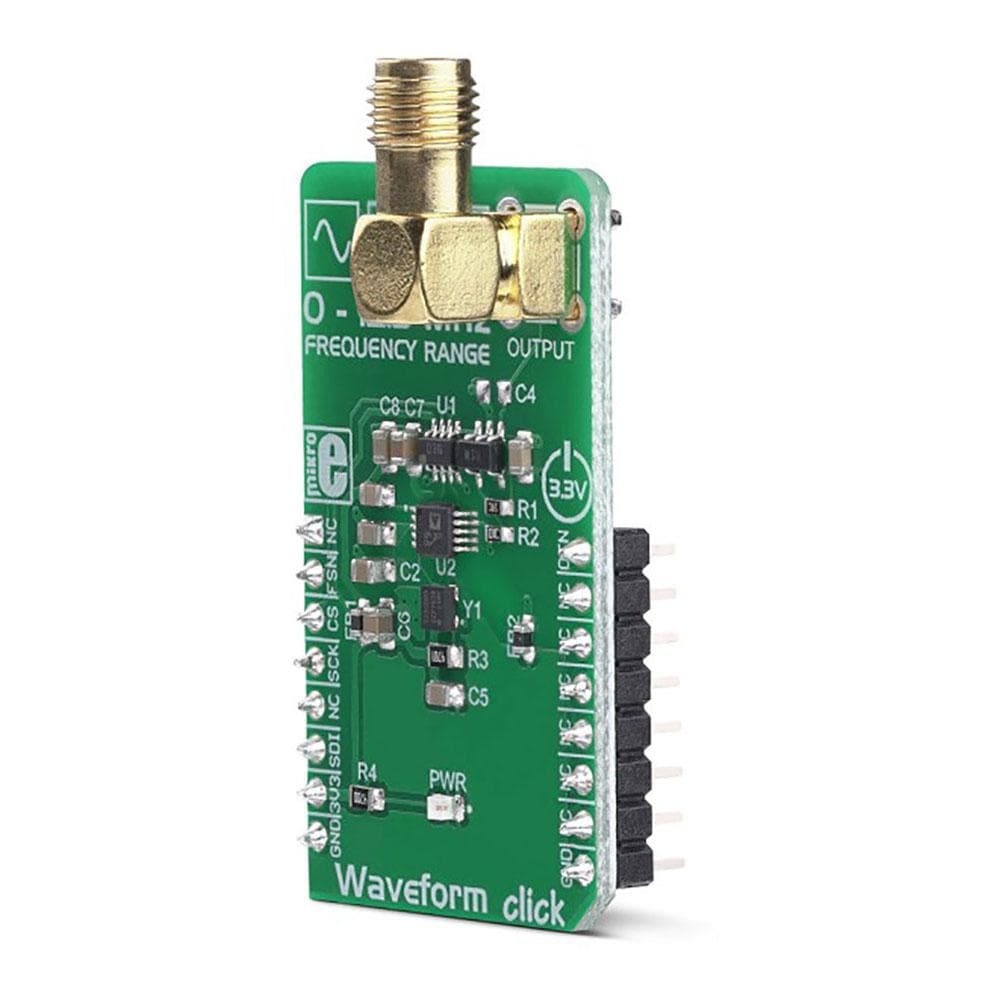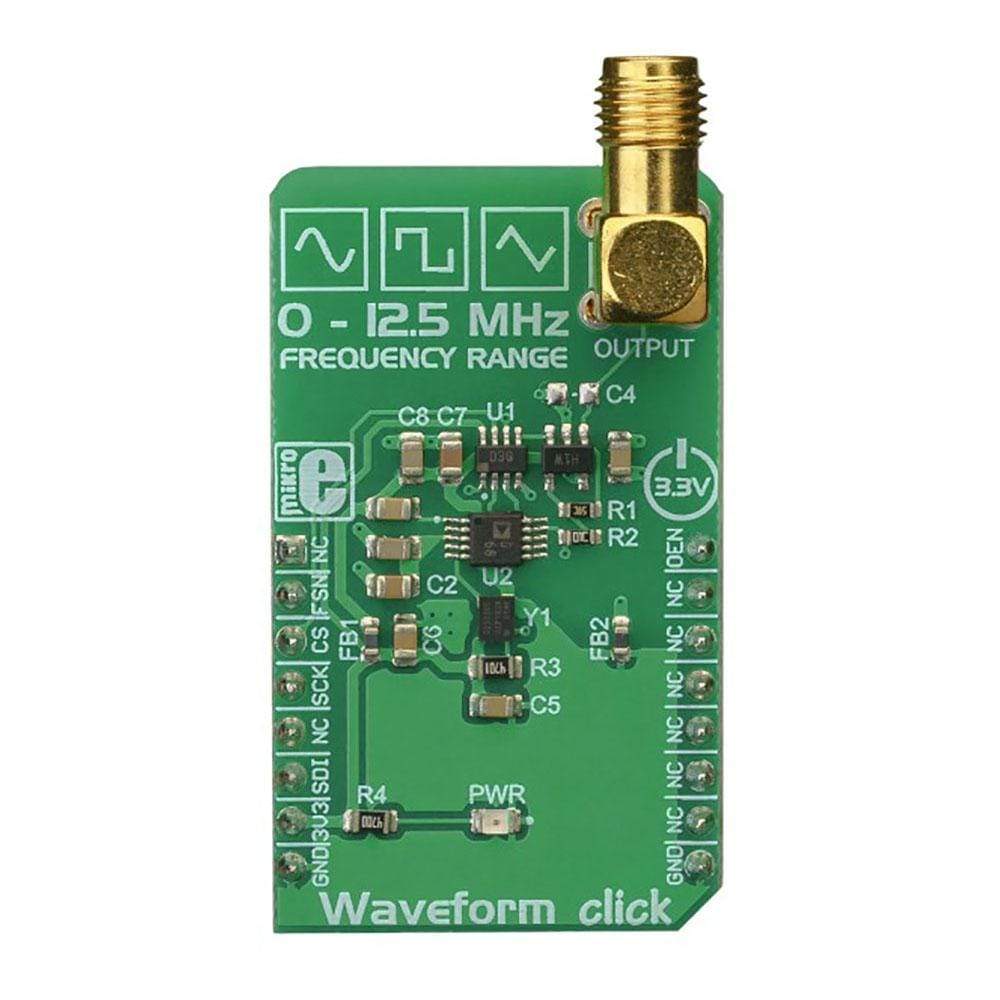


Overview
The Waveform Click Board™ is a precise sine/triangle/square waveform generator, capable of reproducing frequencies up to 12MHz. It utilizes a Direct Digital Synthesis (DDS) IC made by Analog Devices, a company famed for its specialization in DSP development and engineering. The AD9833 waveform generator IC requires a very low count of additional components: besides the external clock source, it requires almost no components, allowing the Click Board™ to be equipped with some additional circuits. A digital potentiometer IC is used to attenuate the output signal, while the high-quality op-amp is used as a buffer.
Downloads
Das Waveform Click Board™ ist ein präziser Sinus-/Dreieck-/Rechteck-Wellenformgenerator, der Frequenzen bis zu 12 MHz wiedergeben kann. Es verwendet einen Direct Digital Synthesis (DDS) IC von Analog Devices, einem Unternehmen, das für seine Spezialisierung auf DSP-Entwicklung und -Technik bekannt ist. Der AD9833-Wellenformgenerator-IC erfordert nur sehr wenige zusätzliche Komponenten: Abgesehen von der externen Taktquelle benötigt er fast keine Komponenten, sodass das Click Board™ mit einigen zusätzlichen Schaltkreisen ausgestattet werden kann. Ein digitaler Potentiometer-IC wird verwendet, um das Ausgangssignal zu dämpfen, während der hochwertige Operationsverstärker als Puffer verwendet wird.
| General Information | |
|---|---|
Part Number (SKU) |
MIKROE-3309
|
Manufacturer |
|
| Physical and Mechanical | |
Weight |
0.022 kg
|
| Other | |
Country of Origin |
|
HS Code Customs Tariff code
|
|
EAN |
8606018714223
|
Warranty |
|
Frequently Asked Questions
Have a Question?
Be the first to ask a question about this.



